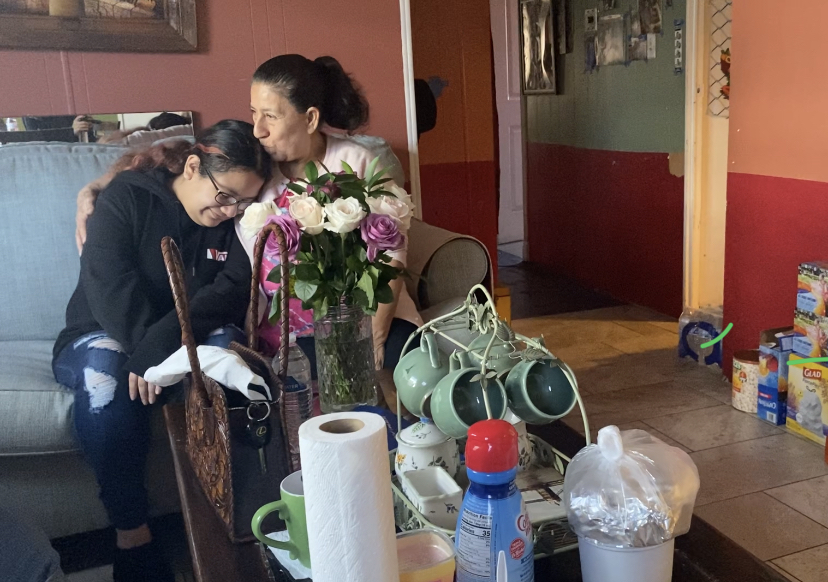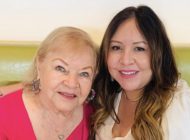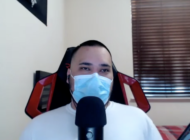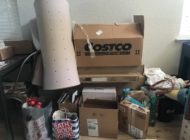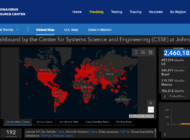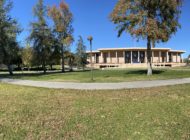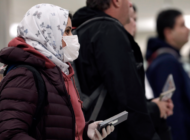Even before the pandemic, families depended on schools for meals and child-care. Around 80% of LAUSD students qualify for free and reduced-priced meals. In response LAUSD opened 60 grab-and-go food centers to help families struggling with food insecurity.
By AMANDA ALVARADO
EL NUEVO SOL
The Martinez household begins their days with warm hugs and loud “I love you’s ”.
Zonia Martinez is a full-time single mother, who regularly would spend her time volunteering at schools. Her youngest daughter, Lindsey Martinez, is now a high school senior, and will be graduating during the pandemic. They both have spent much more time at home these days following the shutdowns of schools due to COVID-19. It’s been over a year now, and they both miss their social lives that revolved around being at school.
“I miss the school, and want to go back,” said Martinez.
LAUSD is the largest district in the state of California serving over 600,000 students.
Since Fall 2020 Governor Gavin Newsom announced that around 5.5 million California students will not be allowed to return for in-person education. There has been a large uncertainty about how and when school campuses will reopen. Sara Santa Cruz, a middle school teacher, remembers the first moments of uncertainty the health crisis brought; she didn’t know how long the closures would initially be. It was clear though that both the teachers and students would move forward with the rest of the school year in their own homes.
With the district closing schools over concerns of the coronavirus it caused devastating consequences. Even before the pandemic families depended on schools for meals and child-care. Around 80% of LAUSD students qualify for free and reduced-priced meals. In response LAUSD opened 60 grab-and-go food centers to help families struggling with food insecurity.
Laura Garcia is a LAUSD Cafeteria worker who helps prepare the free meals that are given out. She says she is proud of the work she does because she notices how families want to enjoy what they prepare for them. Garcia knew students that faced food insecurity.
“I personally knew a lot of students that depended on the food they would eat in school, right now I don’t get to see them, but I know they exist in the community and that they come to pick up food the school is offering,” said Garcia.
Martinez mentioned how for a short time she would go to get the free grab-and-go meals LAUSD was offering. She would go to elementary school near her house until she couldn’t anymore. She explained to me how the elementary school was providing free meals to children within the communities, but after a while the school told her only children who attended that school could receive meals.
This complicated things for Martinez. For one her daughter is no longer in elementary school, and second she doesn’t have transportation to go to her daughter’s school as she pleases. Lindsey attends Lake Balboa College Prep, a magnet k-12 school. It takes about 20 minutes by car, and over an hour by bus to get to her school.
As the virus progressed Lindsey couldn’t help to think about the impact this would have on her education and what this would mean for her senior year of high school. She is one of the many high school seniors who is not experiencing a traditional senior year this year. The senior events she looked forward to since she can remember have all been canceled in efforts to slow the spread of the virus.
A College Finance 2020 Survey found that 69% of students feel that the COVID-19 pandemic has negatively affected their quality of education. Virtual learning for Lindsey has made her worry about falling behind in her studies. She says everything is different now, and that the teachers are limited now in what they can teach and how they can teach students.
“A lot of my classes are not the same, they are online now only, and a lot of other students don’t want to show their face when we’re online on Zoom,” said Lindsey.
Santa Cruz says the most difficult thing as a teacher right now is not being able to be in the classroom with her students. Distance learning has its restrictions and can be difficult.
“ …looking at the faces on the screen I see that some are present, others are answering my question, but not everyone responds or participates…,” said Santa Cruz.
Great Public Schools Now reports that 64% of middle and high school students were not actively engaging online on a daily basis. The same report found that in 2019-20 Black, Latino, Native American, and Pacific Islander students had the highest absenteeism rates in LAUSD and in Los Angeles County.
Martinez worried about her children’s mental health. She noticed in the beginning they went through a lot of stress and anxiety. According to a 2020 UCLA Study on the impact of isolation, over 30% of parents said their child needed mental health services following social isolation because of their experience during the pandemic.
“I’ve had to get closer to them more and help them with what I can, a lot of times I’ve had to hide my feelings in order to not affect them,” said Martinez.
These times have made Martinez realize her children need her more than ever. Her work lately has revolved around cooking, cleaning, and taking care of her family. Data released from CNBC Make it from UrbanSitter’s found that 53% of parents say mom is the primary caregiver in their home.
Martinez says she always tells her children everything will be fine.
[Video in Spanish]Tags: Amanda Alvarado COVID-19 Pacoima schools virtual learning







